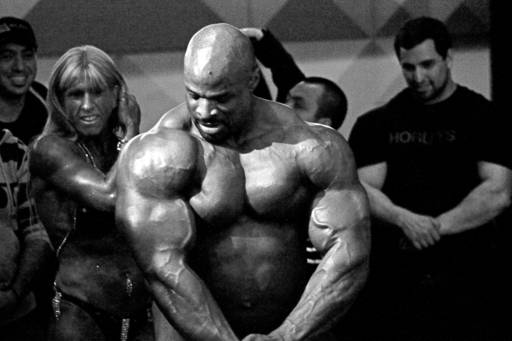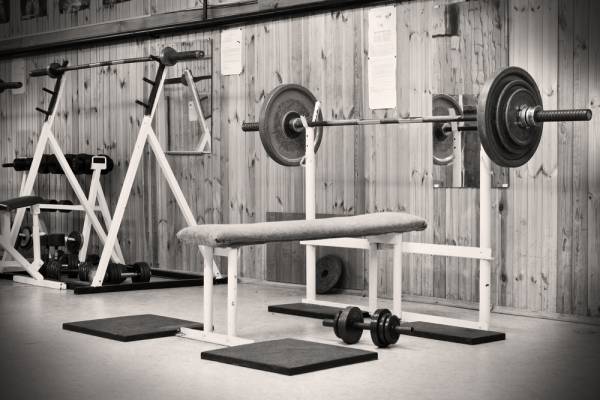Every athlete, and especially every coach, needs to critically evaluate their training in relation to their own goals and their own bodies. If a particular exercise is ineffective or, even worse, injurious for you, then don’t do it. It doesn’t matter if you’ve seen the UFC’s Jon Jones, the World’s Strongest Man Brian Shaw, or basketball star LeBron James doing it. You’re not them.
I’ve Never Worked Out With a Guru
About six months ago, I entered my first powerlifting competition. While I enjoyed myself, I felt that afterwards was a good time to make a change to my workout routine, which had gotten a bit stale after so many years.
After looking around and thinking things over, I decided to go with Jim Wendler’s popular 5/3/1 program. I spent three weeks doing my due diligence, and starting the first week of December, I began my first monthly cycle, with the idea of re-testing myself after four months. Also, following the advice of writers and coaches who I respect, I decided to run these four months by the book.
The results were mixed, at best. While my bench press went up appreciably, my squat actually decreased, and my deadlift flatlined. To say I was disappointed is an understatement. It was then that I decided to re-engage my brain in relation to my own training. I started looking at what has historically worked well for me, and considering what just doesn’t work.
I know I’m perhaps offending some popular and knowledgeable coaches here, but no “guru” has ever written a book on fitness that applies to everybody who reads it. None of them know my body the way I know my body. I’ve never personally worked out with any of these gurus. And as much advice as they can offer me, none of them live within a thousand miles of me. Therefore, no matter what they may write, they are not writing a workout that is 100% perfect for me. The closest anyone can get is to hit that 90-95% target, with most coaches knowing that the programs they write in a book are most likely in the 80% perfect-for-their-clients range.
The same applies to you. So, what are some specific areas that you can tweak in a pre-published workout in order to better tailor it to you? Here are a few ideas:
Rep Range
Different people react differently to certain rep ranges. If you find that sets of five reps are not the best for you, but instead sets of three combined with back-off sets of ten, then great. If you get the best results for your goals by doing straight sets of eight instead of pyramiding sets of eight, six, and four reps, then make that change.
Sets and Volume
Mistakes in this area mostly happen when people try to follow the magazine workout of their athletic heroes and overtrain. Ronnie Coleman (pictured below) may have built himself to the point of doing two-hour leg workouts. Bill Pearl supposedly trained three hours every morning. You’re not them. Perhaps your body needs less volume, perhaps a lot less. Conversely, the pre-fight routine of Georges St-Pierre might not be enough, since he had to be concerned with making a weight class, and not just being fit. In that case, you might need more volume to train the way your body needs.

Exercise Selection:
This is perhaps the most important tweak. Your body has sustained injuries, tweaks, adaptations, and variations that make it unique, even before you account for your DNA and personal tastes. Therefore, some exercises can be changed for you as well. I prefer to think of it in terms of movement patterns. There are four basic movements: upper body push, upper body pull, hip hinge, and lower body pushing (squat). I tend to break it down into groups of six for exercise selection, with upper body pushes and pulls being broken into vertical and horizontal movements (yes, there is some overlap, but the concept is a general one).
Basic barbell examples include:
- Horizontal Upper Body Push: Bench Presses and Variations
- Vertical Upper Body Push: Overhead Press and Variations
- Horizontal Upper Body Pull: Barbell Row Variations
- Vertical Upper Body Pull: Pull Ups
- Hip Hinge: Deadlifts, Glute Ham Raises, Hip Thrusts
- Lower Body Push: Squats, Leg Presses, etc.
As long as you exchange exercises within the same category, you’re not going to have a problem. The only caveat is if you compete in a strength sport or are tested in a certain movement. You will have to practice that movement as part of preparation for competition. So, switch out those decline bench presses for dips, or step ups for lunges. If you’ve been around the Iron Game long enough, you should have a mental exercise thesaurus. And if not, the Internet has wonderful archives of movements, such as the Breaking Muscle workouts page.

The onus lies on you, as the athlete, to ensure that the system you apply to yourself actually is best for you. You may not have the knowledge of a guru, but blindly following someone who doesn’t know your body as well as you do is not going to result in success. Make appropriate tweaks, and keep your mind critically focused on your training in order to maximize your results.
If you have a gap in your training, and don’t have the knowledge to fill that gap, then research, research, and thoughtfully experiment. Again, nobody knows you like you know you. So when it comes to your training, don’t shut off your brain just because some guru tells you something.
Photos 1 and 4 courtesy of Shutterstock.
Photo 3 by LocalFitness, via Wikimedia Commons.






